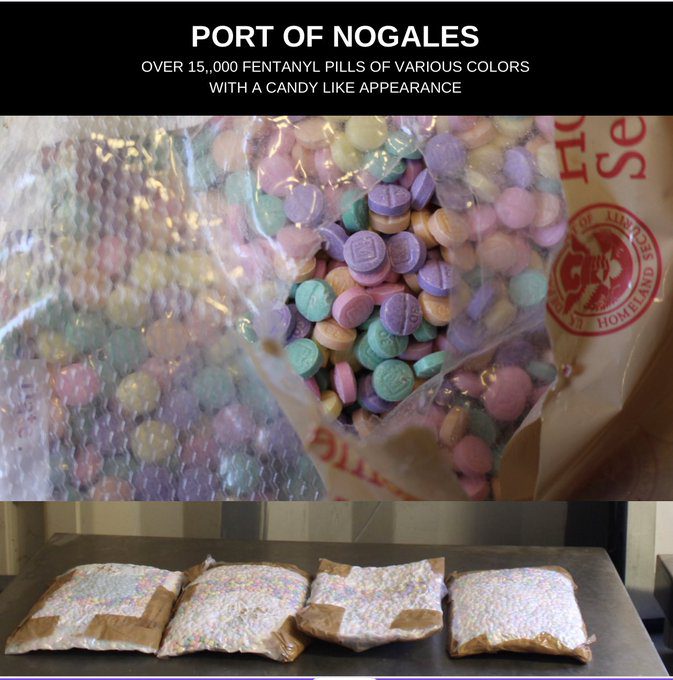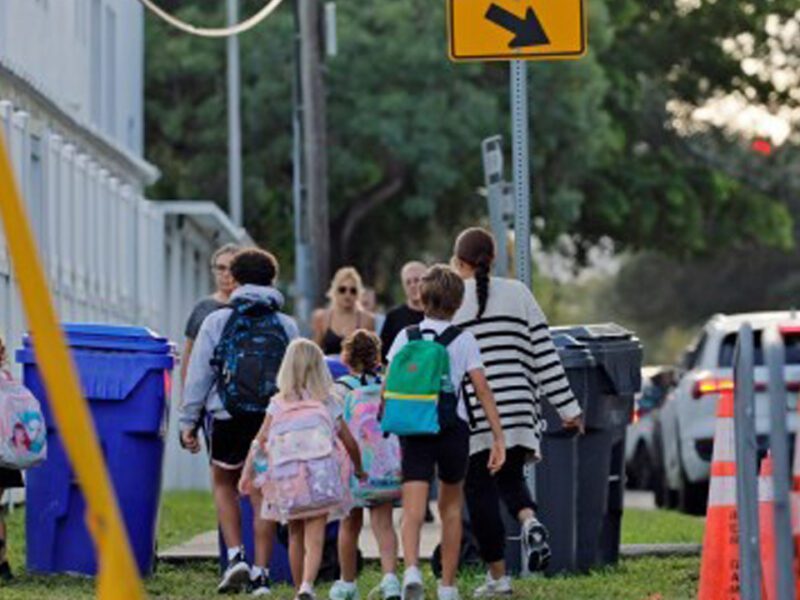
‘Rainbow fentanyl’ looks like candy, and children may be the intended targets
South Florida Sun-Sentinel | By Angie DiMichele | September 13, 2022
The extremely potent synthetic opioid fentanyl is appearing in a new form — colorful pills and powders that look like candy or sidewalk chalk, and officials are cautioning that children may be the intended target of the potentially lethal disguise.
Broward County Public Schools sent an alert to parents, faculty and staff recently to be aware of the candy-colored pills, dubbed “rainbow fentanyl,” and said the drug has been found in actual candy, such as Jolly Ranchers, and molded into gummy bears in some parts of the country.
Though the Broward Sheriff’s Office, Fort Lauderdale Police Department and the Palm Beach County Sheriff’s Office said there have not been any reported cases of rainbow fentanyl to date in the area, the School District’s message said “law enforcement has advised that it is only a matter of time before it makes its way into our community.”
:quality(70)/cloudfront-us-east-1.images.arcpublishing.com/tronc/U7IWM62UVFHGJO4Q7DIA7AW4NE.jpg)
Thousands of the colorful pills were seized recently at a port along the U.S. border in what the Drug Enforcement Administration called an “alarming emerging trend” that “appears to be a new method used by drug cartels” to reach young people.
Between Aug. 16 and 17, Customs and Border Patrol Officers confiscated over 265,000 of the colored pills at the Port of Nogales in Arizona, Florida Attorney General Ashley Moody wrote in a recent news release.
The DEA reported finding rainbow fentanyl in 18 states in the month of August. In the past few weeks, officials found the drug in Portland that looked like “thick pieces of brightly-colored sidewalk chalk,” the DEA said.
Fentanyl is as much as 100 times stronger than morphine, according to the Centers for Disease Control and Prevention, and can be prescribed in certain forms for pain management. Illegally-made fentanyl, though, is flooding the streets and is commonly laced with other illicit drugs. Just a few milligrams —the size of salt grains — can be enough to kill.
Of the 125,336 deaths in Florida between January and June 2021, fentanyl was the drug that caused the most deaths, with 2,920 deaths, according to the latest interim report by the Florida Medical Examiners Commission, published in May 2022. Nearly 300 of the deaths caused by fentanyl were in Broward County.
In Florida alone in 2020, more than 5,300 people died from fentanyl, an increase of 63% from the previous year. Broward County led the state in fentanyl-related deaths, with 642 deaths where fentanyl was found, according to the Florida Medical Examiners Commission’s 2020 annual report.
Palm Beach County saw the second-highest number of fentanyl-related deaths in the state in 2020 at 634, the report said. There were 334 deaths in Miami-Dade County were fentanyl was detected that year.
John Glover, a peer specialist of six years with South Florida Wellness Network, was part of a team of volunteers and staff who in March distributed naloxone, used to reverse the effects of overdoses, to Spring Breakers following several fentanyl-related overdoses in the area.
Glover said while he hasn’t yet heard of rainbow fentanyl reaching the area, he is concerned about the new form reaching young people.
“It looks less threatening,” Glover said. “I see it being something that could potentially be a problem for the children, for our youth out there that are unknowingly coming in contact with these and thinking because of the way its branded or the way it looks like that it would be something they could have a good time on and have no tolerance and then end up overdosing.”
Few young people died from fentanyl in the first half of 2021, according to the report, with only 14 people younger than 18 statewide. The vast majority of people who died from fentanyl were between the ages of 35 and 50.
“[It] seems like they’re trying to shift it to a more younger group of individuals,” Glover said.





